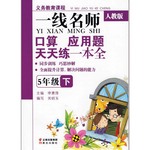题目内容
Grown-ups know that people and objects are solid. At the movies, we know that if we reach out to touch Tom Cruise, all we will feel is air. But does a baby have this understanding?
To see whether babies know objects are solid. T. Bower designed a method for projecting an optical illusion(视觉影像)of a hanging ball. His plan was to first give babies a real ball, one they could be expected to show surprised in their faces and movements, All the 16 to 24-week-old babies tested were surprised when they reached for the illusion and found that the ball was not there.
Grown-ups also have a sense of object permanence. We know that if we put a box in a room and lock the door, the box will still be there when we come back. But does a baby realize that a ball that rolls under a chair does not disappear and go to never-never land?
Experiments done by Bower suggest that babies develop a sense of object permanence when they are about 18 weeks old. In his experiments, Bower used a toy train that went behind a screen. When 16-week-old and 22-week-old babies watched the toy train disappear behind the left side of the screen, they looked to the right, expecting it to re-appear. If the experiment took the train off the table and lifted the screen, all the babies seemed surprised not to see the train. This seems to show that all the babies had a sense of object permanence. But the second part of the experiment showed that this was not really the case. The re-searcher substituted(替换) a ball for the train when it went behind the screen. The 22-week-old babies seemed surprised and looked back to the left side for the train. But the 16-week-old babies did not seem to notice the switch(更换).Thus,the 16-week-old babies seemed to have a sense of “something permanence,” while the 22-week-old babies had a sense of object permanence related to a particular object.
1.The passage is mainly about .
A.babies’sense of sight B.effects of experiments on babies
C.babies’understanding of objects D.different tests on babies’feelings
2..In Paragraph 3, “object permanence” means that when out of sight, and object .
A.still exists B.keeps its shape C.still stays solid D.is beyond reach
3..What did Bower use in his experiments?
A.A chair B.A screen C.A film D.A box
4.. Which of the following statements is TRUE?
A.The babies didn’t have a sense of direction.
B.The older babies preferred toy trains to balls.
C. The younger babies liked looking for missing objects
D.The babies couldn’t tell a ball from its optical illusion.
1..C。主旨大意题。本文通过科学家的研究和对研究结果的解释,旨在说明婴儿对物体的理解。
2..A。词义猜测题。通过对第二项研究情况的阅读和第三段的解释得知。
3.B。细节理解题。第二段和第四段中所述的Bower的两个实验中都用到了screen.
4.D。推理判断题。第二段中所述实验情况表明:婴儿伸手去摸屏幕上的影像,说明他们事先不能区分一个真正的球和影像的区别。
【解析】 略

 新课标同步训练系列答案
新课标同步训练系列答案 一线名师口算应用题天天练一本全系列答案
一线名师口算应用题天天练一本全系列答案【小题1】__ One of the best things you can possibly do is to start you own club.It’s great fun especially if you are the sort of person who feels there’s never anything to do during the school holidays.
The first thing you need to come up with is an idea for your club.【小题2】 . Pets, clothes, pop music or dancing groups, sports, making things? The list is endless.
Next you need some friends to be in your club with you. 【小题3】 . All you need is three or four other people who are interested in the same thing as you.
【小题4】 . You should all sit down somewhere together with lots of pieces of paper and write down every name you can think up.That’ll keep you busy for ages.
At your first meeting you should make up a rule book.And the first rule should be no grown-ups or little/big brothers or sisters! The best clubs are always secret!
Now you have just about everything you need, except membership cards.These are very important and again you can spend a lot of time making them. 【小题5】 .Why not leave some space for a photo of yourself? That will make the membership card really look like it.
So there you are, get clubbing! Once you get started you’ll think of loads of more interesting things to do!
| A.That’s easy. |
| B.Enjoy your own club! |
| C.Invite a designer to join you. |
| D.What are you interest in? |
F. Then you need to pick a name for your club.
G. Use a bright thick pen to make a special design.